#Timeless #Elegance #Decorating #Antique #Side #Tables
Antique side tables, with their rich history and intricate craftsmanship, are more than just functional pieces of furniture—they’re timeless treasures that can elevate the aesthetic of any space. Whether you’re a seasoned collector or just beginning to appreciate the beauty of antiques, incorporating antique side tables into your home can bring a touch of elegance and character. Here’s how you can use them, why they’re worth including in your decor, and how to seamlessly blend antique and modern styles.
Why Choose Antique Side Tables?
- Unique Craftsmanship: Unlike mass-produced modern furniture, antique side tables boast unique, hand-crafted details that make each piece a work of art.
This Louis XVI Style Tambour Side Table on Styylish is renowned for its exquisite marquetry decor. It perfectly represents the unparalleled craftsmanship of antiques, with its prestigious marble top, framed by an ornate brass railing. Revel in the intricate craftsmanship and attention to detail evident in the marquetry, a testament to the artistry of the era.
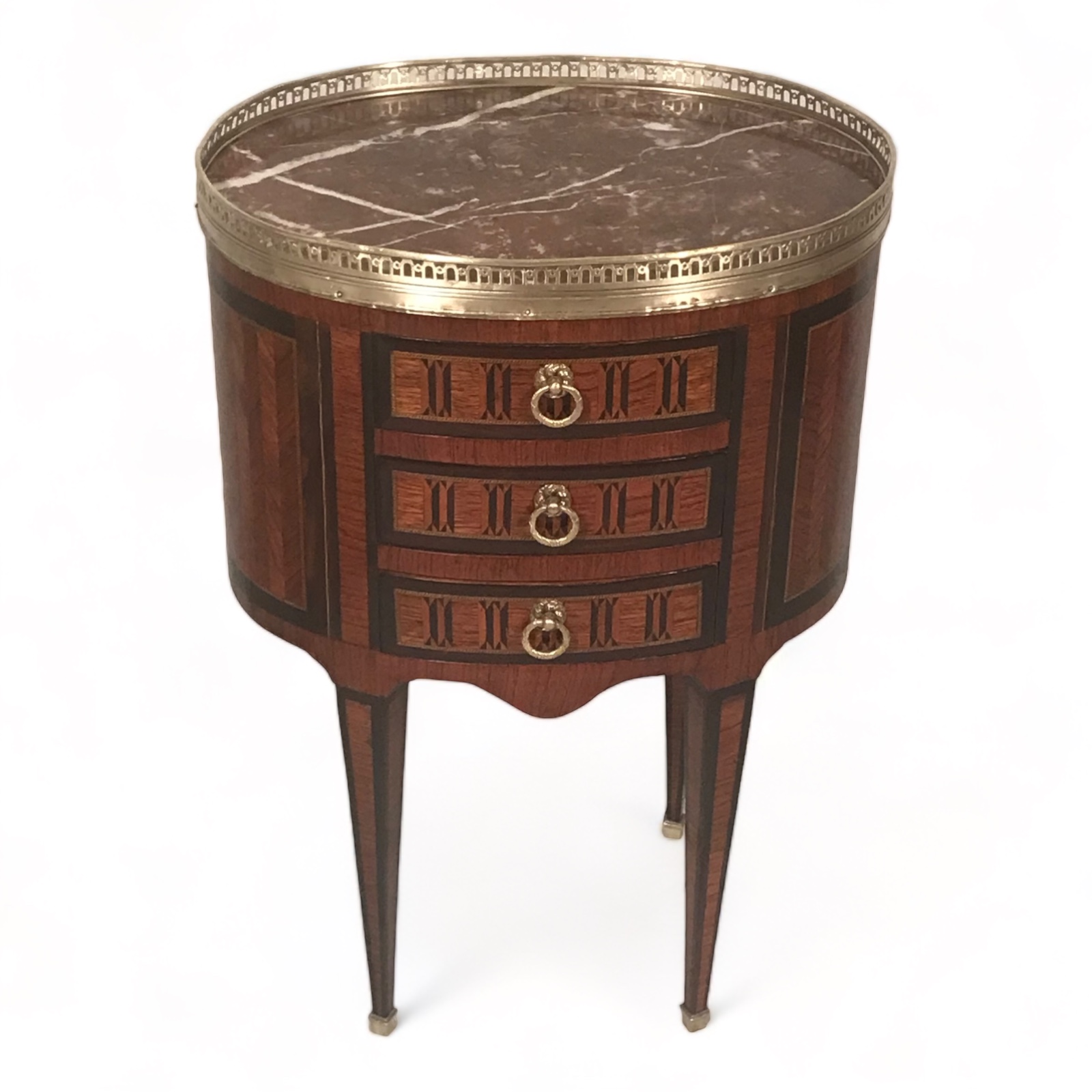
2 . Historical Value: These tables carry stories and history, adding depth and narrative to your home decor.
This stunning Second Empire Side Table from 1860 France is an excellent example of the rich history of antique tables. This table is from the reign of Napoleon Bonaparte (1808-1873), who was Emperor of France from 1852 to 1870. The Empress Eugénie, who adored Marie-Antoinette, was highly inspired by the Louis XVI style. The Empress initiated the resurgence of Louis XVI furniture style elements, like this table.
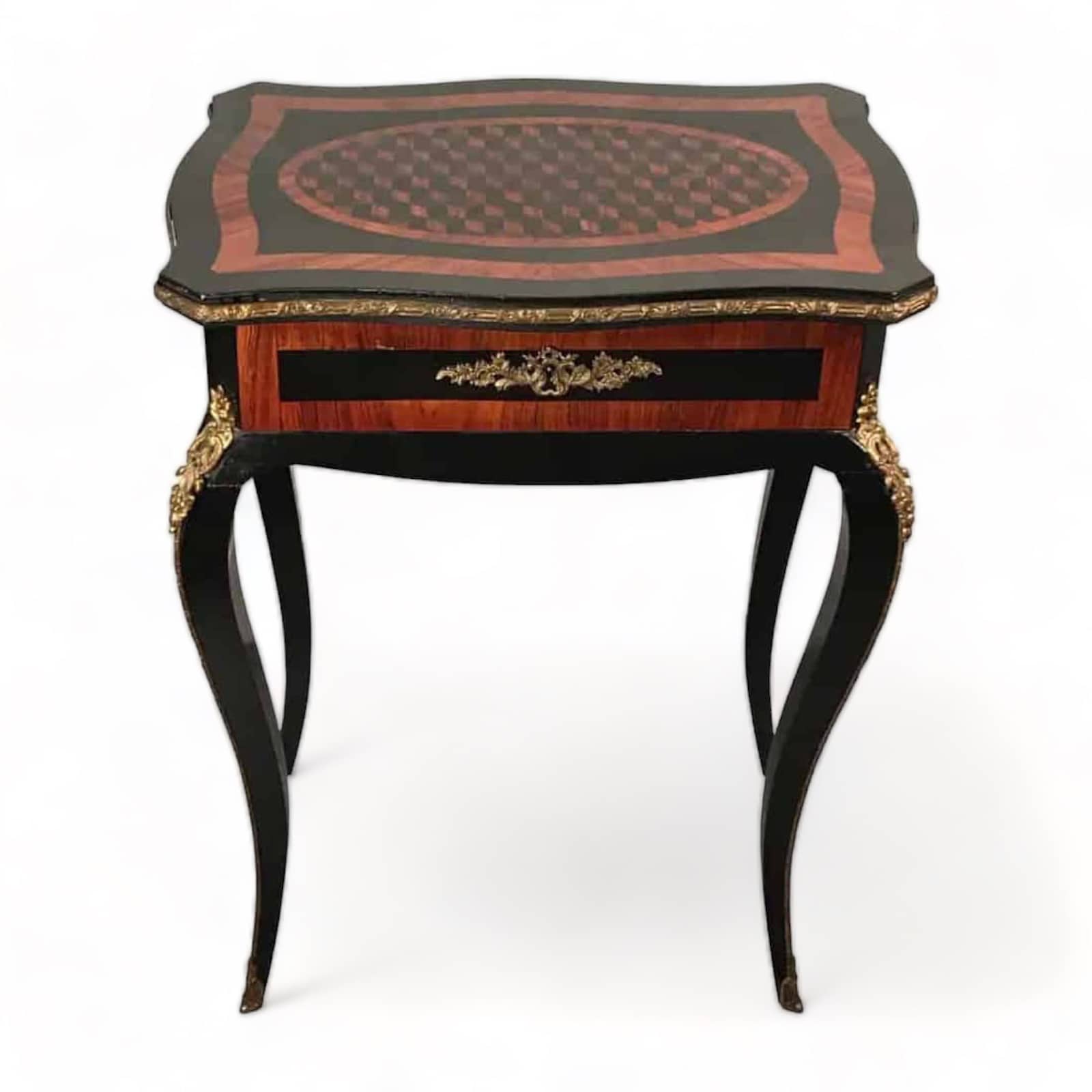

3. Durability: Antique pieces were built to last, made from high-quality materials that have stood the test of time.
This fine pair of original Art Deco console tables comes from France around the year 1930. They are the perfect example of antiques built to last, with their book-matched walnut veneer and low depth of the shelf. Polished to a high gloss polished surface and veneered in Macassar underneath the top and base, they have lasted for almost 100 years, and could last for at least 100 more.
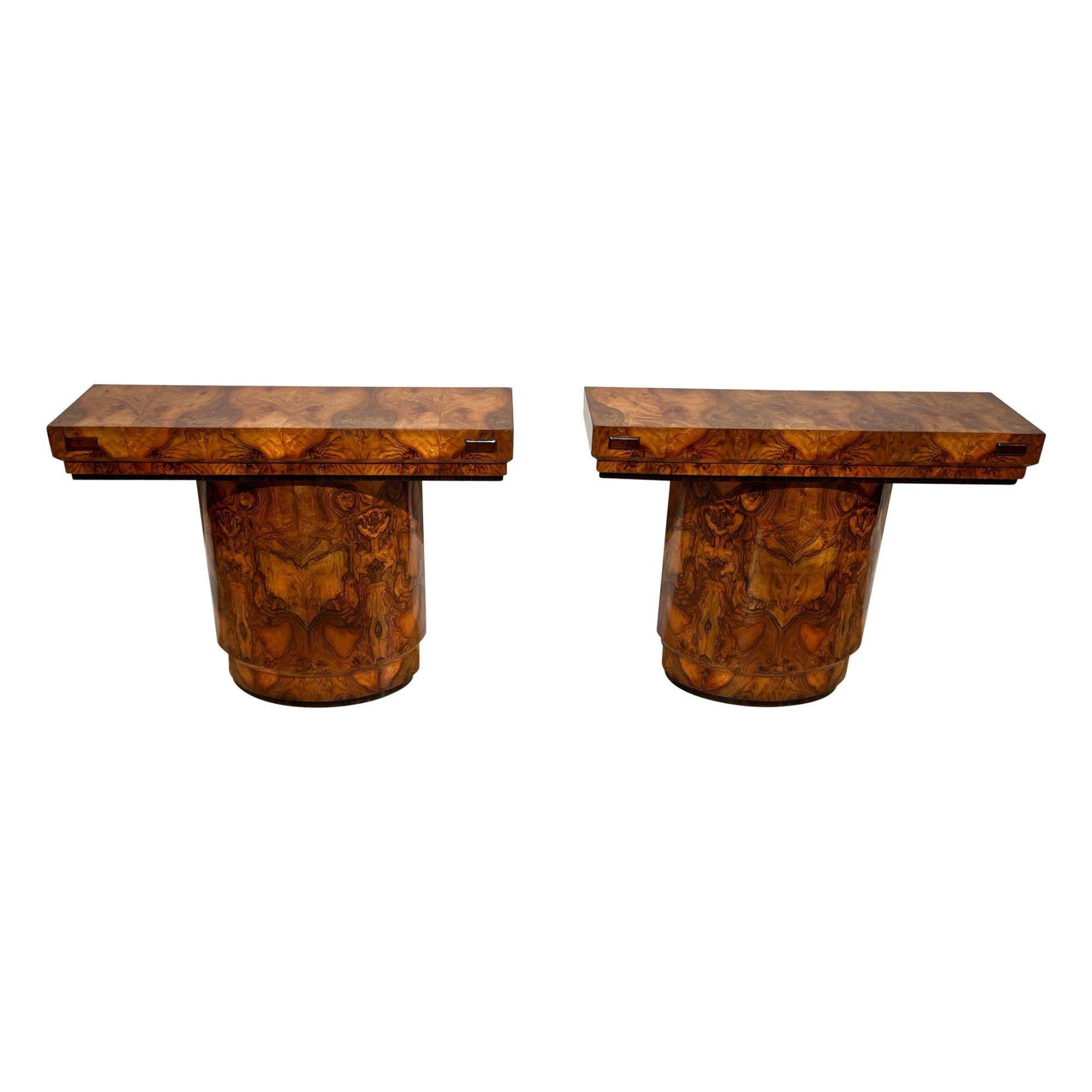

4. Sustainability: Using antique furniture is an eco-friendly choice, reducing the demand for new materials and promoting the reuse of existing resources. By opting for an antique, like this sleek Bauhaus 1930’a side table from Styylish, you can minimize your footptint on the planet, while taking advantage of stunning craftsmanship.
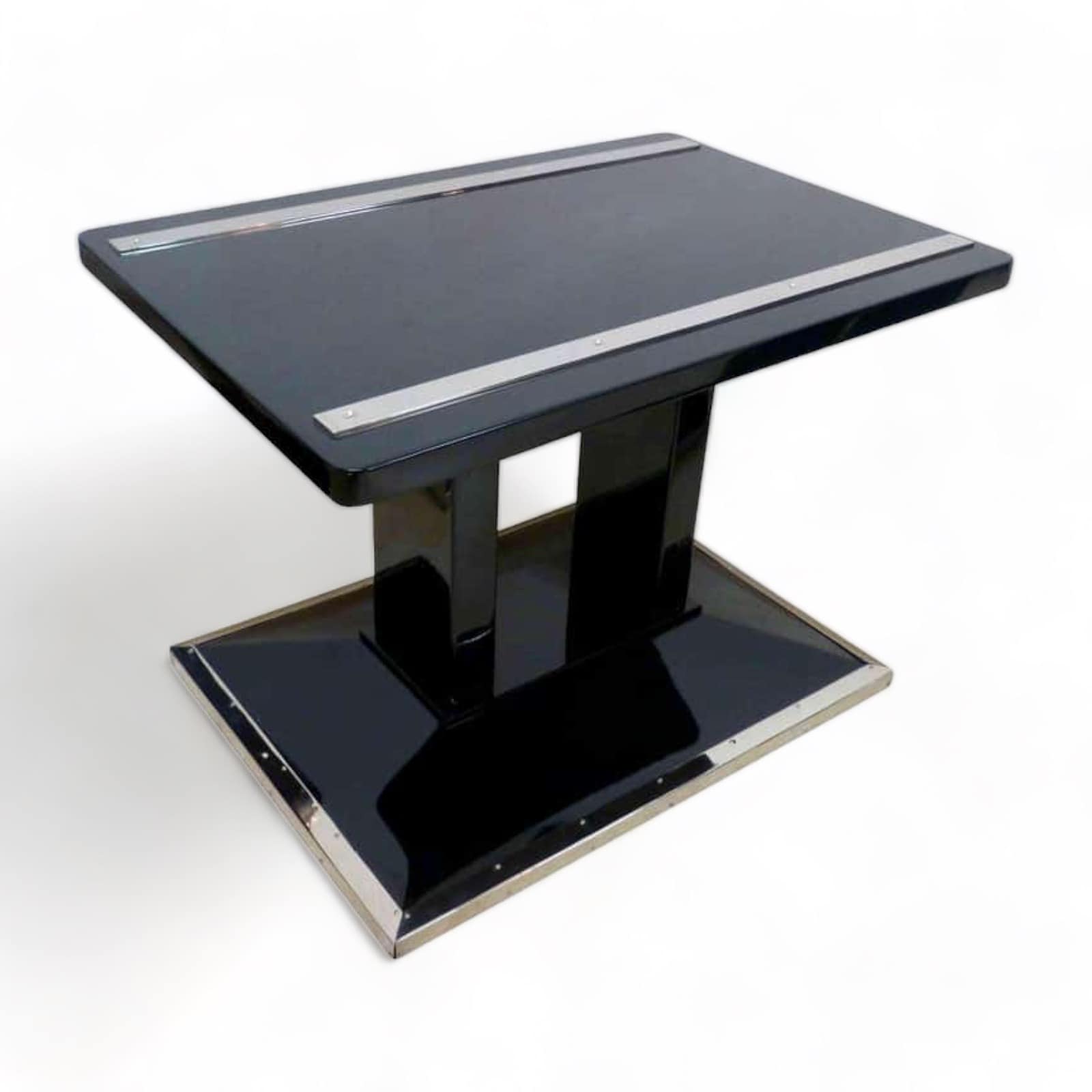

Where to Use Antique Side Tables in Your Home
Living Room
In the living room, antique side tables can serve as charming end tables next to sofas or armchairs. Their detailed carvings and rich wood tones add warmth and sophistication. Pair them with contemporary seating to create a striking contrast that highlights the unique beauty of both styles.
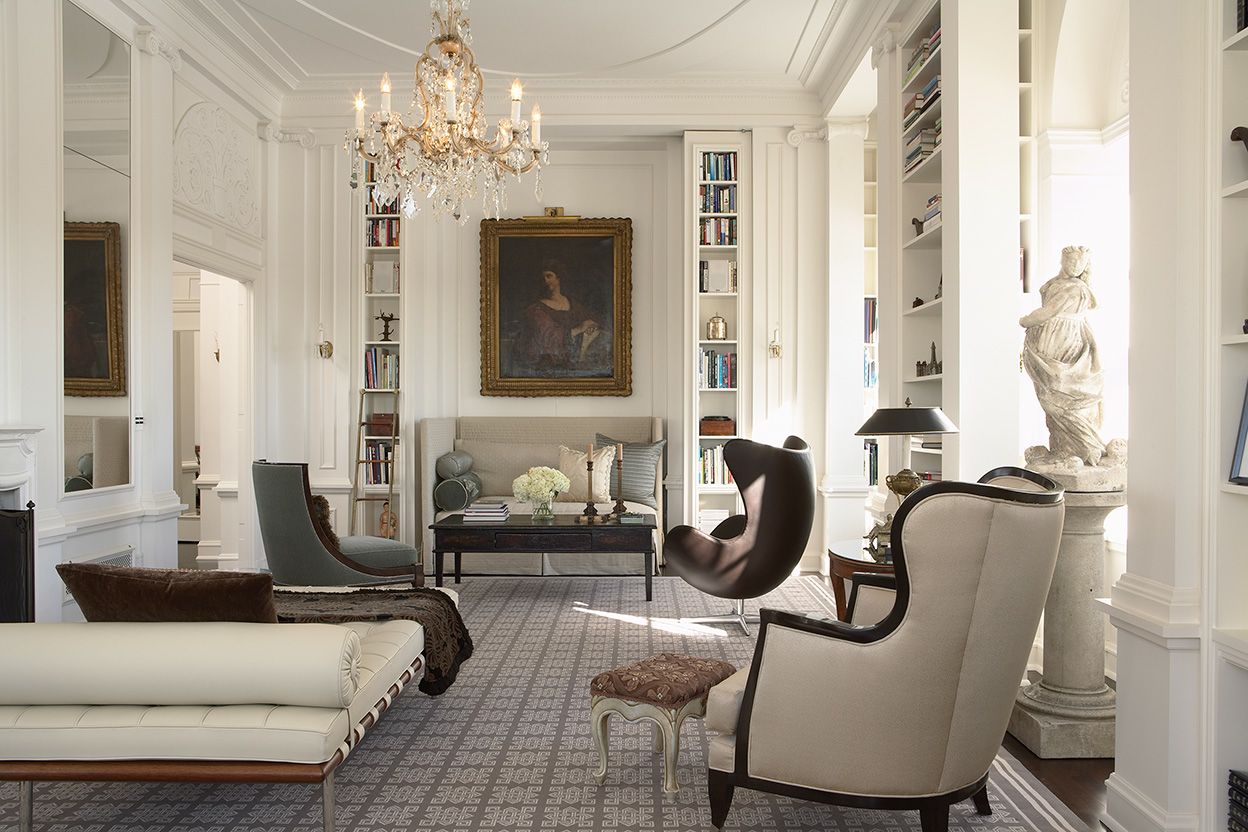

Bedroom
Antique side tables are the perfect pieces as bedroom decor, providing a touch of vintage elegance to your bedroom. Use them to hold a stylish lamp, your favorite books, or a vase of fresh flowers.
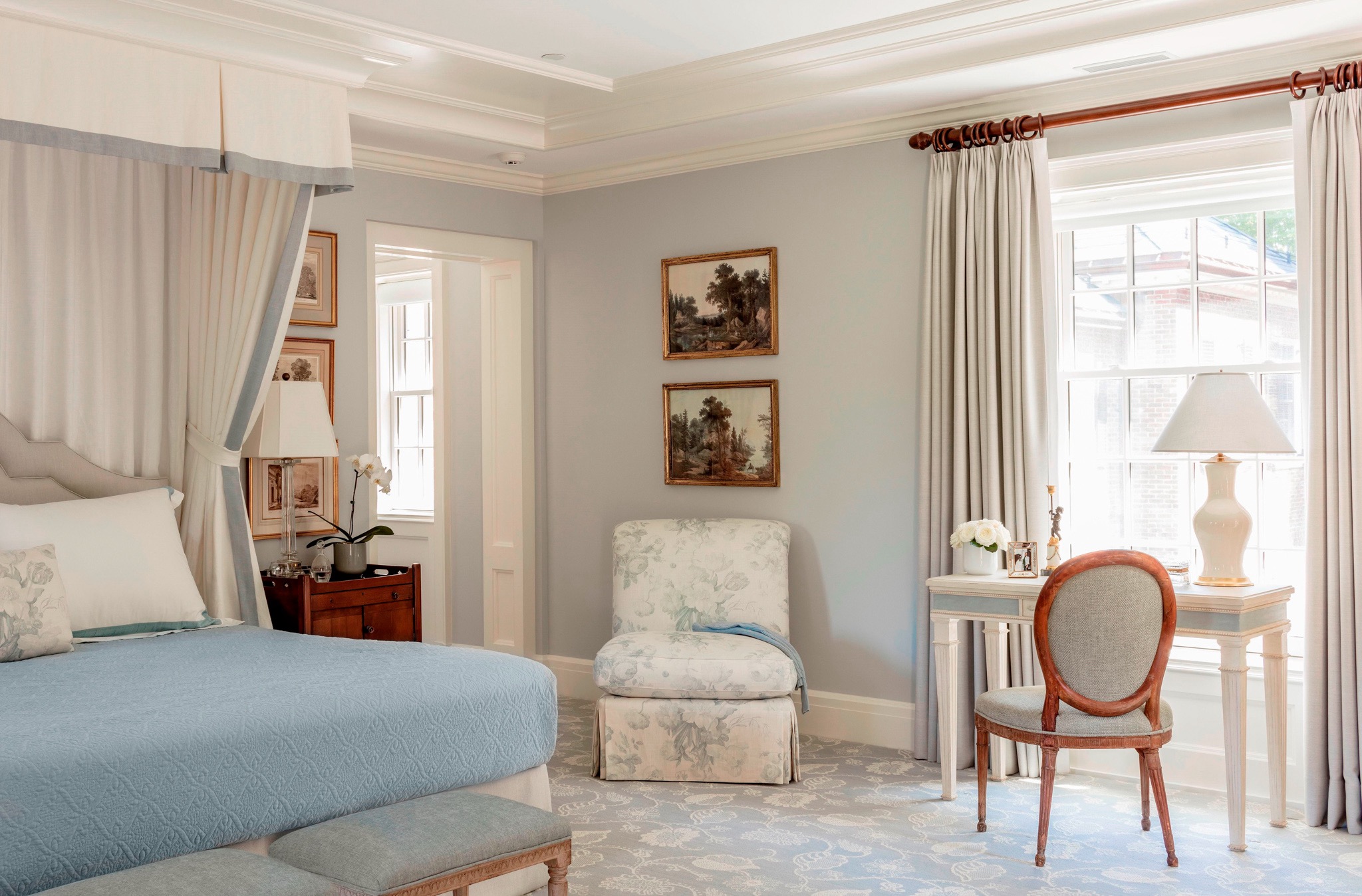

Entryway
Place a side table in your entryway as a catch-all for keys, mail, and other essentials. This practical yet stylish choice greets guests with a sense of history and sophistication right at the door.
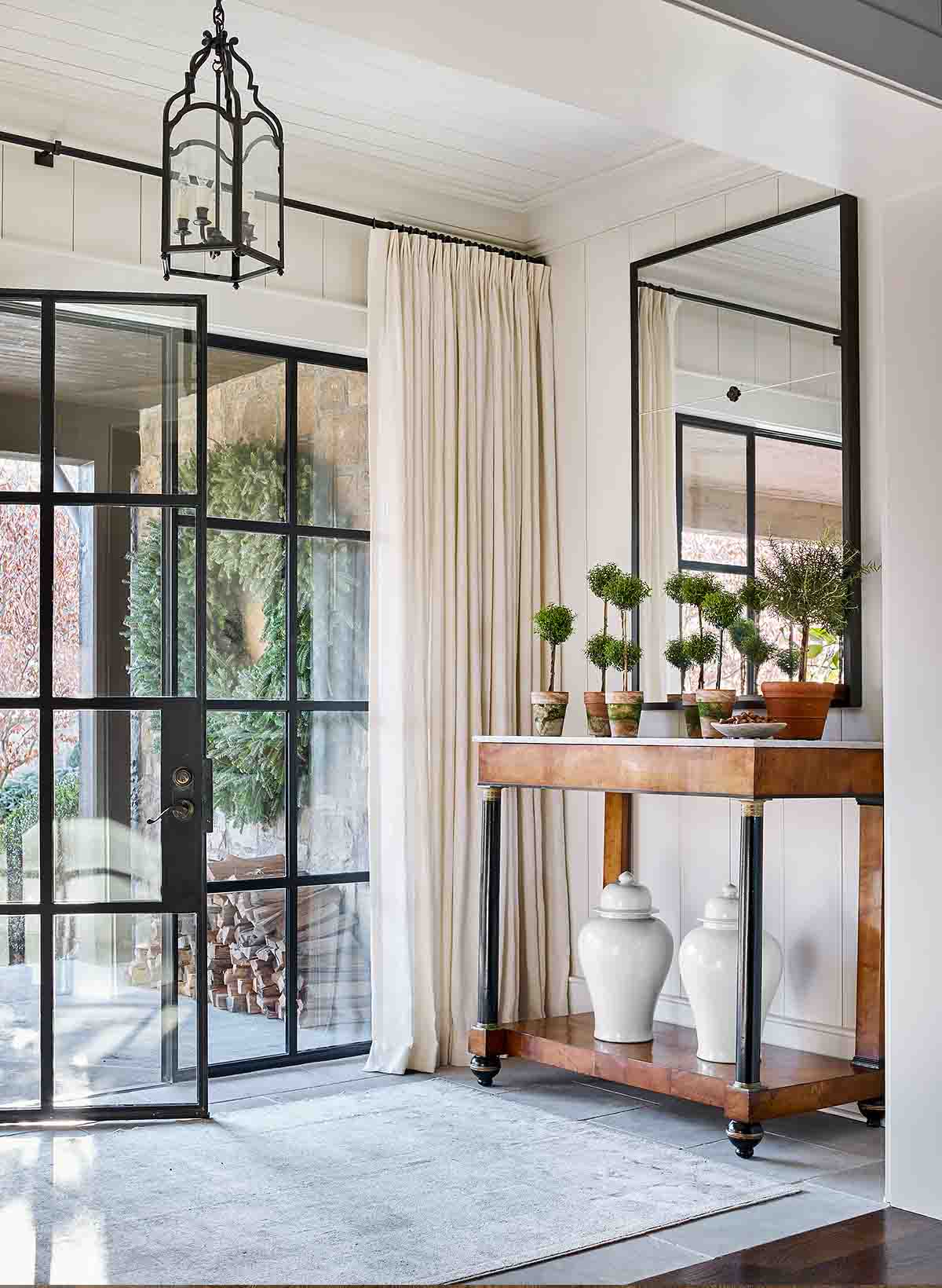

Bathroom
In the bathroom, a small antique side table can hold toiletries, candles, or decorative items. The unexpected use of an antique piece in this space adds character and charm, transforming a utilitarian room into a more inviting and luxurious space.
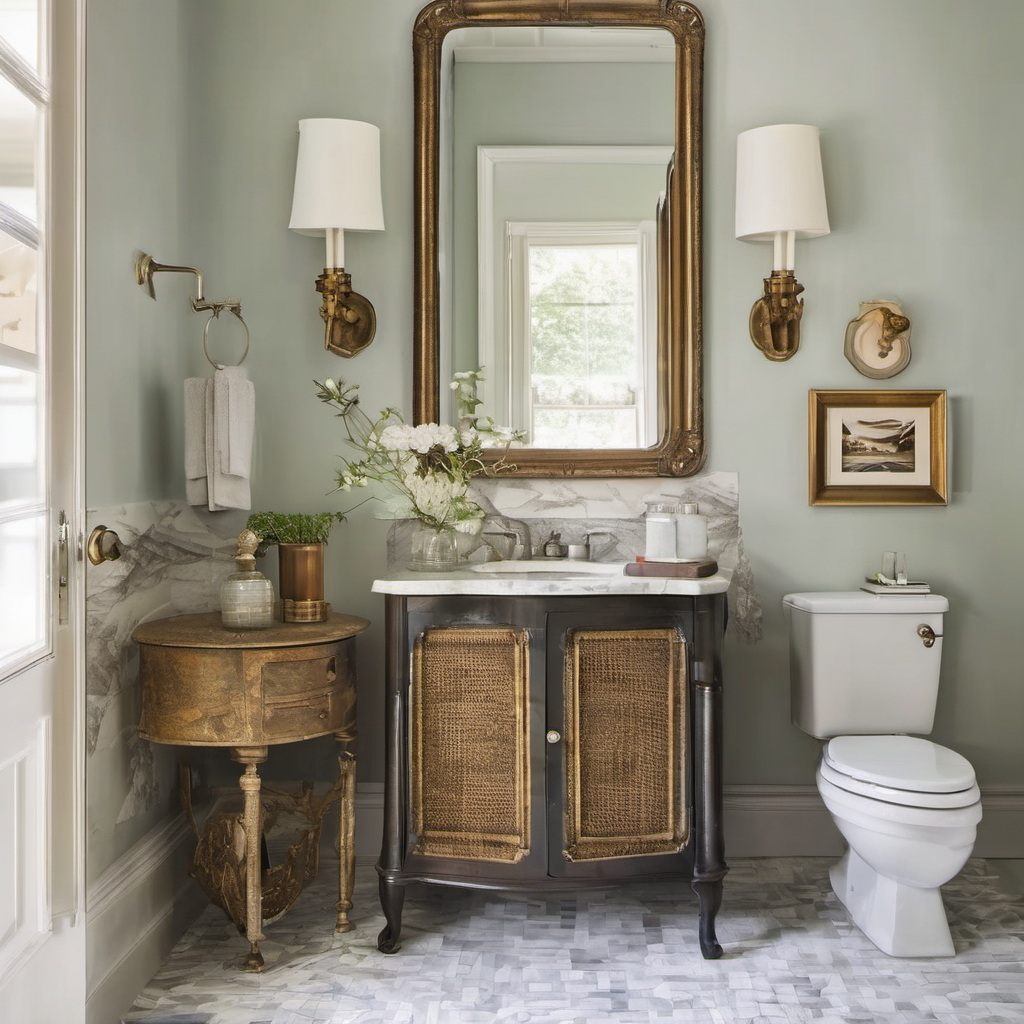

Decorating Ideas
Mix and Match Styles
Combining antique and modern pieces can result in a dynamic and harmonious look. Here are some tips on how to do it:
- Color Palette: Use a cohesive color palette to tie the different styles together. For example, if your table is a rich mahogany, consider modern pieces in complementary shades like deep navy or crisp white.
-
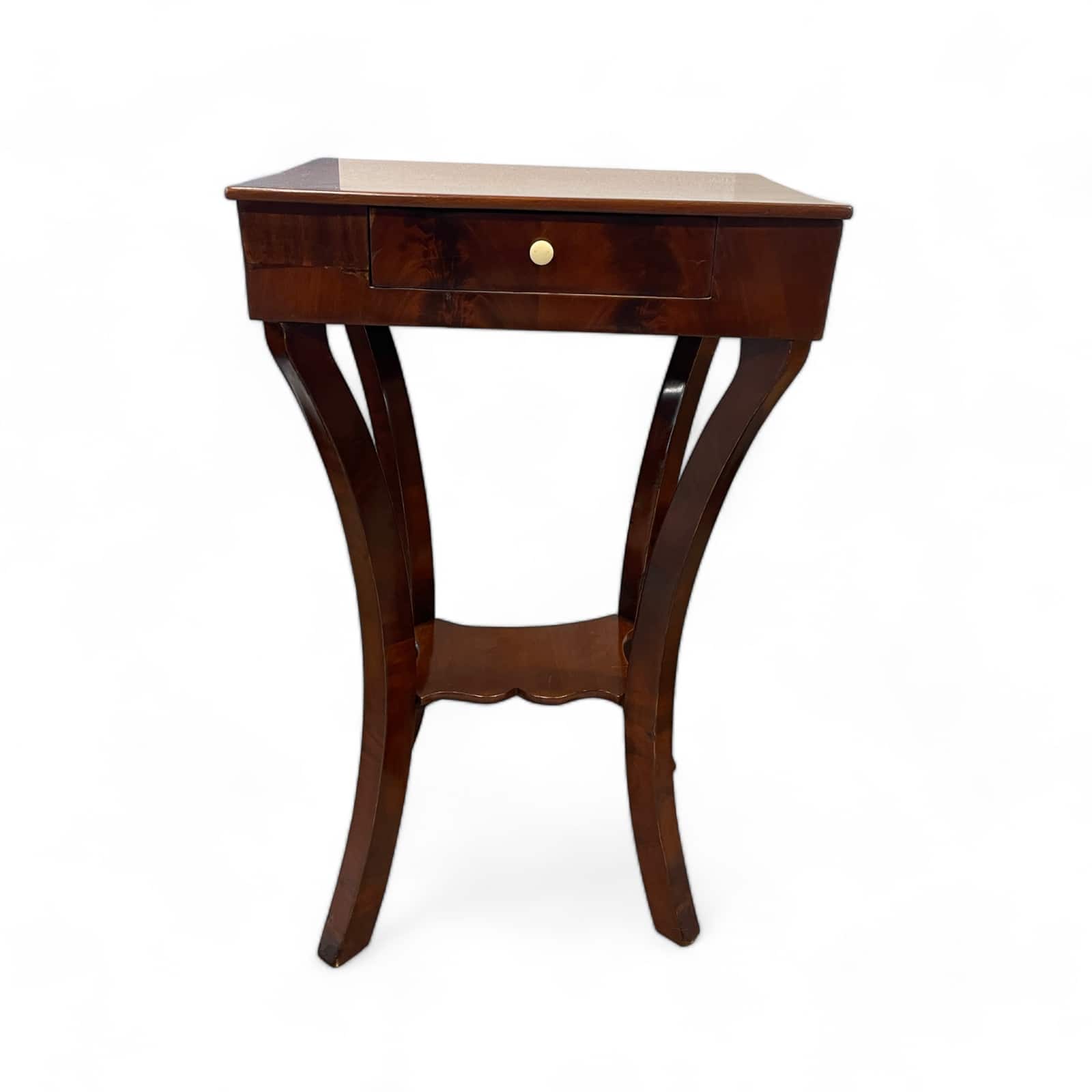

Biedermeier Side Table, Mahogany veneer- available on Styylish
- Balance: Balance is key. If you have a heavily detailed antique side table, pair it with simpler, streamlined modern furniture to avoid overwhelming the space.
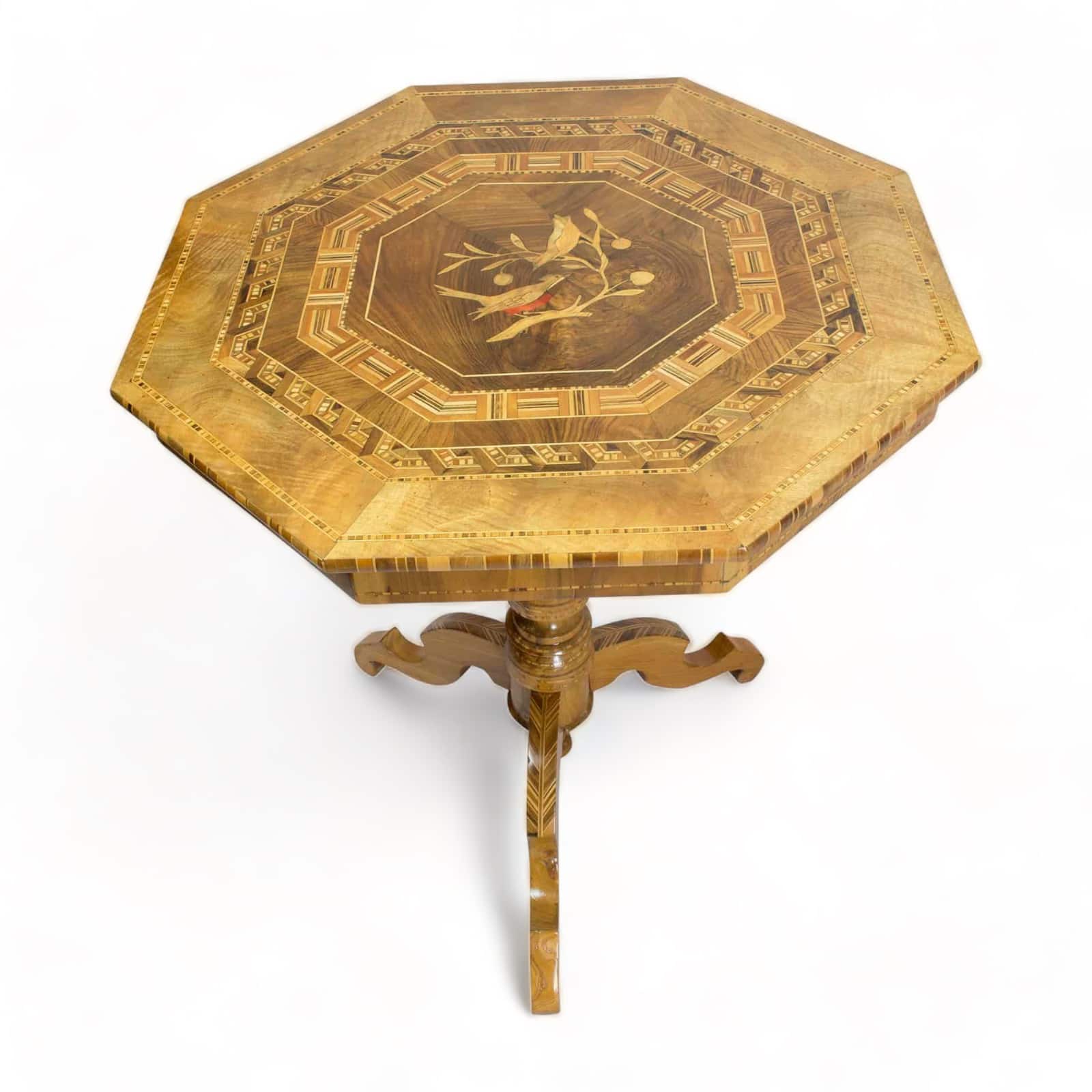

- Repetition: Repeat certain design elements, such as metal accents or geometric shapes, found in both antique and modern pieces to create a sense of unity.
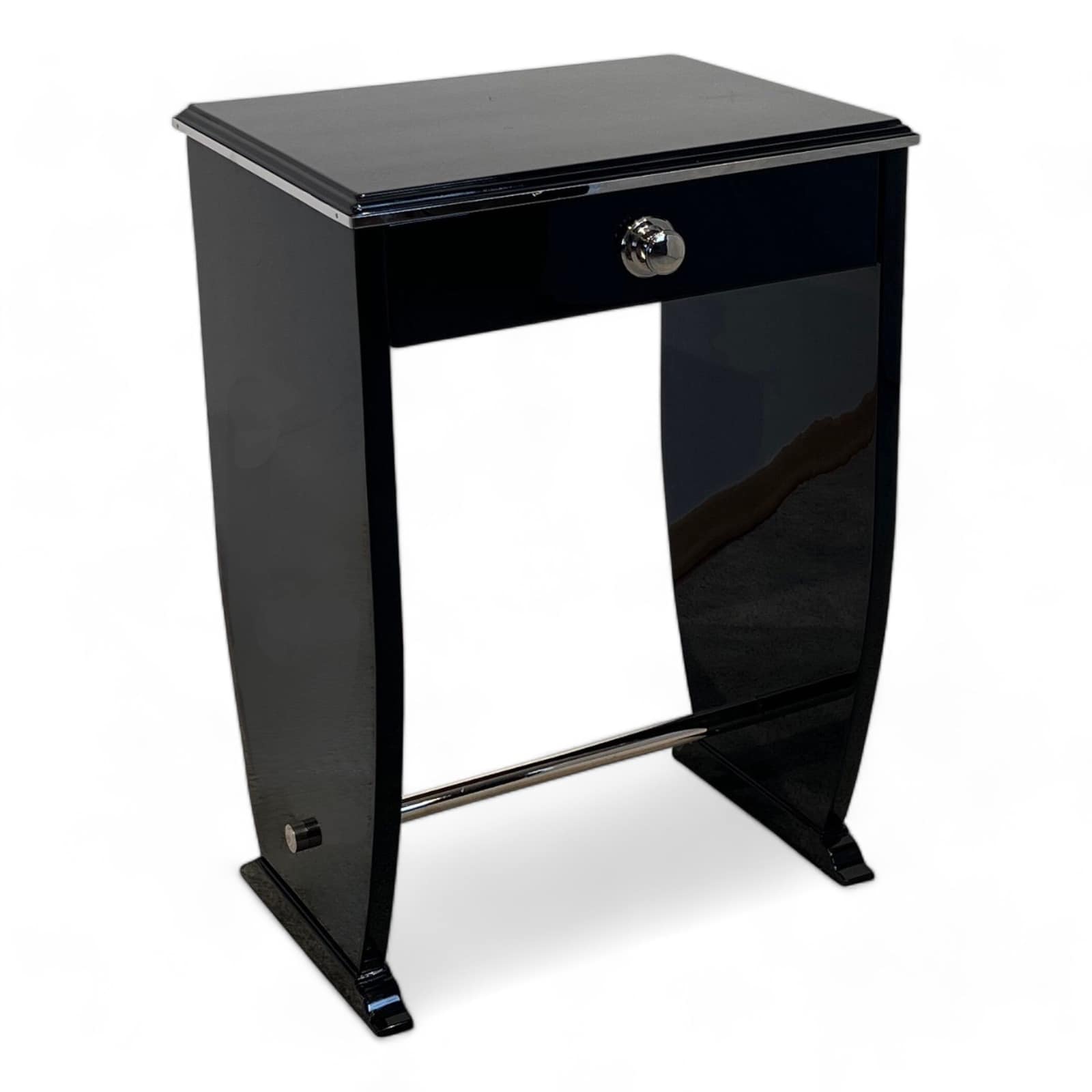

Incorporate Contemporary Accessories
Modern accessories can help bridge the gap between antique and contemporary styles. Here are a few ideas:
- Lighting: A sleek, modern lamp on an antique side table creates an interesting visual contrast. Opt for minimalist designs that highlight the table’s intricate details.
- Artwork: Pair your antique side table with contemporary artwork. Bold, abstract pieces can create a focal point that draws attention to the unique qualities of the antique furniture.
- Textiles: Use modern textiles, like geometric rugs or patterned throw pillows, to complement the antique side table and tie the room together.
Highlight the Antique Piece
Allow your antique to shine by giving it a prominent place in the room. Avoid cluttering it with too many items; instead, let its craftsmanship and beauty take center stage. A simple vase of flowers or a stack of curated books can be all it needs to make a statement.
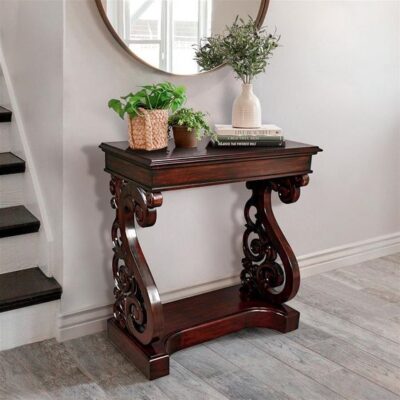

Decorating your home with an antique side table
Antique side tables offer a unique blend of history, craftsmanship, and durability that can enhance any room in your home. By thoughtfully incorporating them into your decor and blending them with modern pieces, you can create a stylish and harmonious space that celebrates the best of both worlds. Whether you’re looking to add a touch of elegance to your living room or a sense of history to your bedroom, antique side tables are a timeless choice that will never go out of style.



